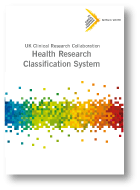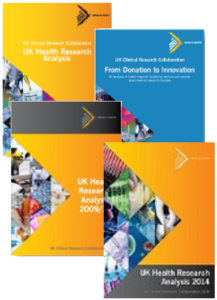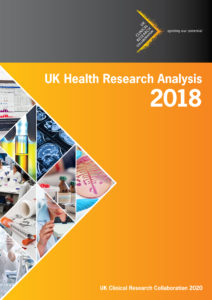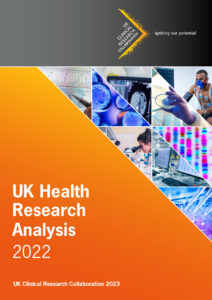History of the HRCS
The origins of Health Research Classification System (HRCS)
The HRCS was developed by UK Clinical Research Collaboration (UKCRC) partners in 2004. One of the partnership’s main aims was to develop a coordinated approach to health research funding. It was agreed that the first step should be the creation of a national picture of UK health research, but to do so required a universal system to classify health research award data.
 The system was designed to produce a broad strategic overview of health research funding and developed after assessing existing classification systems to ascertain the full breadth of the biomedical and health research portfolios to be analysed. The HRCS builds on the WHO International Classification of Diseases and a cancer-based system (the Common Scientific Outline) but its breadth of coverage across all types of research and areas of health and disease is unique.
The system was designed to produce a broad strategic overview of health research funding and developed after assessing existing classification systems to ascertain the full breadth of the biomedical and health research portfolios to be analysed. The HRCS builds on the WHO International Classification of Diseases and a cancer-based system (the Common Scientific Outline) but its breadth of coverage across all types of research and areas of health and disease is unique.
During and subsequent to its development, the HRCS has been used to classify many thousands of research awards covering the full spectrum of health research funding. The system has now been widely adopted by UK research funders to inform research management and to undertake prospective analyses. Several international funding organisations are now successfully using the system.
The UK Health Research Analyses 2004-2022

The UK Health Research Analysis (2004/05) was where the HRCS was first used to provide a landscape of ‘who funds what and where’ in the UK. Published in 2006, it was a major project which was unique in the global context and was used extensively to make strategic decisions on health research funding. It was followed by an analysis of additional charity funded health research, From Donation To Innovation (2004/05), published in 2007.
The second in this landscaping series, the UK Health Research Analysis 2009/10 was published in 2012. This report identified some significant changes in the UK health research landscape in the five years since the original national analysis from the same 12 largest funders of health research.
The third report in this series, the UK Health Research Analysis 2014, was published in August 2015. This provided a ten year timeline of UK health research funding in the public and charitable sector, with an expansion in participation to members of the Association of Medical Research Charities (AMRC) and the rest of the UK’s research councils.
We conducted a formal review of the HRCS and accompanying resources in 2017. This resulted in some substantial updates to the several guidance topics, creation of new topics for emerging research fields and a new, much improved HRCS website.
 The fourth instalment in the report series, the UK Health Research Analysis 2018, was announced in January 2019 and eventually published in January 2020. This iteration expanded the pool of participating organisations from 64 to 146, bringing in more charities in/outside of the AMRC, other government departments, academies, learned societies and royal colleges.
The fourth instalment in the report series, the UK Health Research Analysis 2018, was announced in January 2019 and eventually published in January 2020. This iteration expanded the pool of participating organisations from 64 to 146, bringing in more charities in/outside of the AMRC, other government departments, academies, learned societies and royal colleges.
 The most recent report, the UK Health Research Analysis 2022, was announced in January 2023. Further increasing the participating organisations to 173, the fifth report in this series also expanded on the principles of data transparency to publish – for the first time – a complete dataset of both direct awards (used in the main analysis) and indirect supportive awards (assessed separately) with additional linkage to Research Organization Registry (ROR).
The most recent report, the UK Health Research Analysis 2022, was announced in January 2023. Further increasing the participating organisations to 173, the fifth report in this series also expanded on the principles of data transparency to publish – for the first time – a complete dataset of both direct awards (used in the main analysis) and indirect supportive awards (assessed separately) with additional linkage to Research Organization Registry (ROR).
